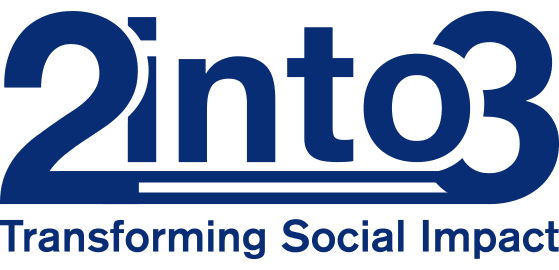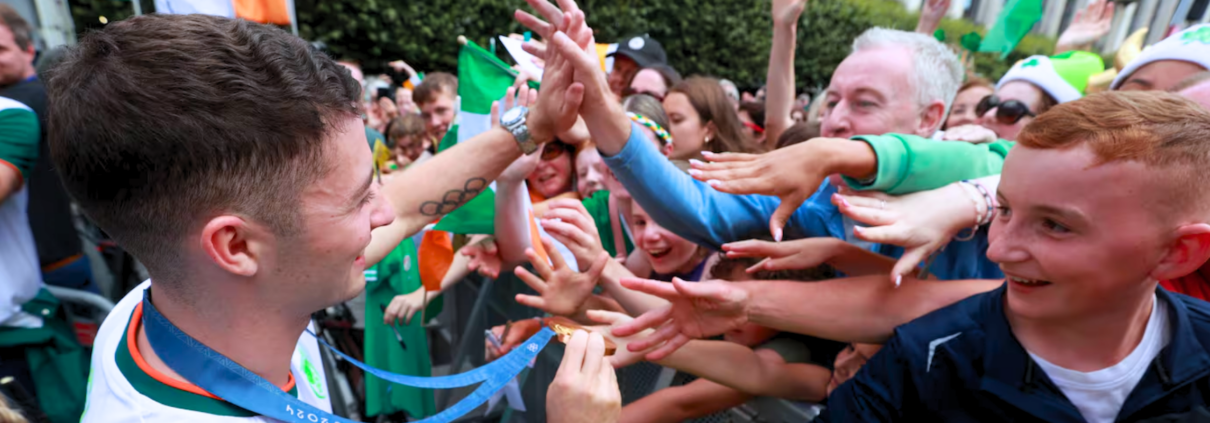Ireland’s 2024 Olympics Success – Are we ready to capitalise?
Paris 2024 is being widely commended as Ireland’s most successful Olympics. By many measures: number of medals – gold in particular; number of people attending the Team Ireland GPO homecoming; television viewing metrics; this is undeniable.
So how does the Irish sports system position itself strategically to make the most of this success, and more importantly, to build on it?
How do you measure success?
The many medal table formats that have been flashed across news outlets globally in recent weeks illustrate the point, “it depends how you measure it”.
We’ve seen multiple versions sliced and diced in terms of number of gold medals (the official table), total number of medals, medals per capita, medals per €1m invested etc. An emerging approach is the one presented at OlympicNationalRankings.com which uses probability ranking and adjusts for population size to address some of the shortcomings of the official medal table ranking method.
Ireland fares well on most of these measures. Not surprisingly, as the Games debrief continues, different nations will undoubtedly favour different measurement methods – likely those that present them in the best light. However, medals are only the tip of the iceberg.
Measurement beyond medals
Governments and other funders make huge investments into competing at the Games. The general motivations for funding sport are to build a sense of national pride and position the country within upper echelons internationally, but perhaps the most often emphasised aspiration is to inspire increased participation in sport. Particularly, among the younger population.
Unfortunately, measuring the direct effect of the Games on sports participation rates isn’t as immediate or straightforward a task as counting the amount of bling around the necks of a nation’s athletes. Future editions of the Irish Sports Monitor may give an indication of whether an uplift in participation is achieved following the Games period. Ahead of this, it’s worth asking the question: if this is a key factor in why we invest so heavily in sport – are we ready and positioned to deliver on this aspiration?
Are we ready to deliver on sporting ambitions?
A current promotion that is offering U16s the opportunity to swim for free at a particular swimming complex for the month of August (fair play Swim Ireland, Dublin City Council and the North-East Inner-City Initiative) following the success of Ireland’s swimmers at Paris 2024 has me thinking. It is likely the case in many households all over Ireland there are currently young girls and boys of all ages asking their parents: “can I try the sport I just saw an Irish athlete excel in at Paris 2024?” In many cases, the answer is “no”.
The facility challenge
To try canoe slalom (Liam Jagou was 7th) and indoor track cycling (Lara Gillespie was 10th) currently requires a trip abroad – and beyond these unique facility examples, it is worth noting that many Irish towns and regions are outside reasonable proximity to a 50m swimming pool or running track to accommodate potential participants, let alone to provide for those with emerging talent. Factor in the tyranny of Irish weather, with an additional number of existing facilities rendered unusable for significant parts of the year . This leaves a situation where parents are forced to travel considerable distances or the children, and hence the wider sports system, miss out on the benefits.
However, it’s not just facilities. Sports programmes and activities need to be designed to context and delivered by suitably qualified personnel to ensure participants are welcome, safe and most importantly, that they enjoy themselves and a number stay involved. For many NGBs, despite delivering a lot with a little, capacity (staff and volunteers) is currently in short supply and an aspiration to develop a greater level of activity and integration between the high performance, pathways and participation functions is not matched with the human and fiscal resources to effectively bring this to fruition.
How do we address these shortages?
There are several position statements within the 2018-2027 National Sports Policy that speak to these challenges, and indeed recent Sports Capital Grant and Large-Scale Sporting Infrastructure Funding rounds will address these shortages to a certain extent. It is encouraging to see government acknowledge this greater need at the culmination of Paris 2024, with the promise of additional high-performance funding for the LA 2028 cycle.
However, if the strategic aspiration here goes deeper than winning medals, an accompanying increased systematic (pun intended) investment in other component parts of the sport participation landscape, be it via government and/or the private sector is also required. A published sport-by-sport stocktake of “what is” vs “what should be”, initially in terms of the two big ticket items: facilities and workforce, would be a good place to start.
What’s next for the Irish Sports System?
The Irish sports system’s Paris 2024 success is not unlike a bigger picture version of the breakthrough performances of swimmer Mona McSharry at the 2017 Junior World Swimming Championships. It is an absolutely fantastic result worthy of significant celebration and right now we should revel in it. More importantly though, is what it means for the future. It’s an exciting indication there is much, much more that can be achieved if we are clear on future targets and measures; we are prepared to strategically analyse our position, further grow the resources invested in sport and work hard to deploy them to maximum effect.
Written by Matt McKerrow, Associate Consultant, 2into3: matt.mckerrow@2into3.com. For more information on our Sports Insights, visit here.


